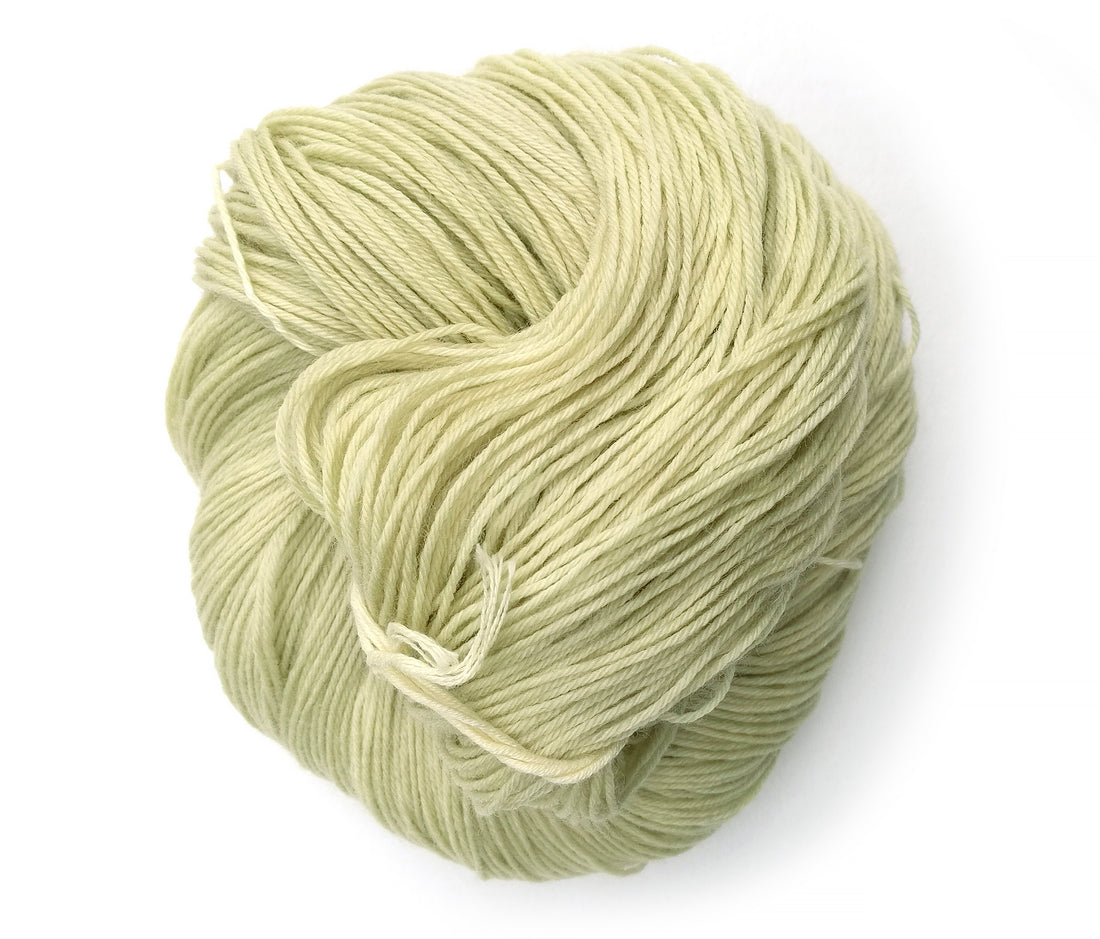
Dyeing Wool Yarn with Blue Hibiscus Petals
I want to share my summer experiments with dyeing wool yarn, even if not all of them resulted in the expected colors. So, let’s talk about the petals of blue or purple Chinese hibiscus (Hibiscus rosa-sinensis). Hibiscus grows everywhere in Graz, blooming in June and July, and there are several bushes with flowers of the desired shade not far from my home.

I collected the flowers for a few weeks and gathered about 100 grams. I soak them overnight in a cold solution of lemon acid. Meanwhile, I soak one yarn skein (75% wool, 25% nylon, 100 g / 500 m) in a solution of crystalline soda. This soda softens the water and helps the yarn to open up. As far as I know, it doesn’t affect the color.
The next day, I prepare the dyeing solution. For this, I heat (but do not boil) the petals in the acidic solution for about an hour. Then I pour the water into a dyeing container, cool it down, add a little more lemon acid, place the prepared wool (it just needs to be slightly wrung out) in, and start heating and stirring — in general, everything goes as usual. I don’t boil it, heat it for about an hour, cool it down, rinse it, and dry it. Unexpectedly, a delicate greenish shade emerged. I was expecting lilac!

I can’t say that I got the color of my dreams, so later I dyed this skein again with yellow food coloring, and here’s what came out: Much better, right?

I don’t provide exact measurements for the amount of lemon acid and crystalline soda because I do everything by eye. Well, about 2 tablespoons of acid per liter of water. With the soda, it’s about the same, and your hands should feel the softness of the water. If it does, then everything is fine. Good luck!

3 comments
Update: habe es ausprobiert, nur mit Alaun gebeizt, also durchgehend sauer behandelt.
Das Ergebnis: blasses mattes Grün, genau wie bei dir🤷🏻♀️😄
Okay, ich sehe jetzt, dass aus den Blüten beim Erhitzen eine graugrünliche Brühe herauskommt und gar nichts in Richtung Blau oder Lila. Dann liegt es vielleicht doch nicht am Soda 😅
Hallo Olga, danke fürs Teilen deines Experiments! Ich hatte gerade dieselbe Idee, nachdem ich viele abgeblühte Hibiskusblüten an einem Strauch gefunden hatte und zu Hause gerade frisch gewaschene Rohwolle liegen habe.
Da probiere ich jetzt mal ein bisschen rum.
Übrigens könnte das mit dem Grünton eventuell doch am Soda liegen, denn diese natürlichen Rot-Blau-Lila-Tönen reagieren stark auf den pH-Wert, etwa so wie Lackmuspapier und Soda ist stark alkalisch.
Ich beize zunächst mal mit Alaun (sauer) und sehe, was dabei rauskommt.😊